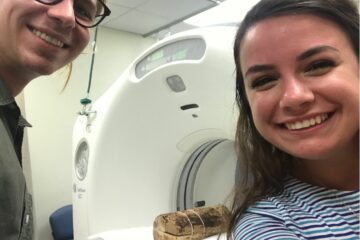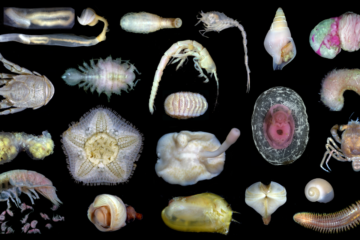A new paper led by Ph.D. student, River Bryant!
, , & (2022). The macrofaunal metropolis in the sediments around the first-ever deep-sea alligator fall. Marine Ecology, 43, e12707. https://doi.org/10.1111/maec.12707
The maintenance of high diversity in deep-sea sediments is often hypothesized to be a result of heterogeneity in disturbance and carbon availability creating long-lived patches of unique communities. Deep-sea food falls are known to contribute to this patchiness, influencing the beta-diversity of soft-bottom communities through varying effects of enrichment and disturbance. Previous food fall work has centered on large (>1000 kg, e.g., whales) or small (0–10 kg, e.g., kelp, fish, wood) food parcels, leading to the hypothesis that only the largest persist long enough to impact sediment communities. The effect of intermediately sized (10–1000 kg) carcasses on sediment macrofauna communities remains poorly understood. Here, we deployed an individual Alligator mississippiensis carcass (19.5 kg) as organic enrichment to an otherwise food-poor landscape at 2034 m in the northern Gulf of Mexico. Sediment cores collected at three distances from the alligator fall following decomposition were used to describe changes in macrofauna abundance and alpha- and beta-diversity. We found that the carcass enriched nearby sediments with up to three times more carbon than background sediments. This carbon enrichment near the carcass did not influence species richness but did correlate with higher abundance and a suite of species unique from background communities. Our findings suggest that the food fall size threshold above which enrichment of local sediments occurs may be lower than previously thought, as we demonstrate that an intermediately sized (19.5 kg) food fall can contribute carbon and promote beta- and thus gamma- diversity of the infaunal benthos.


